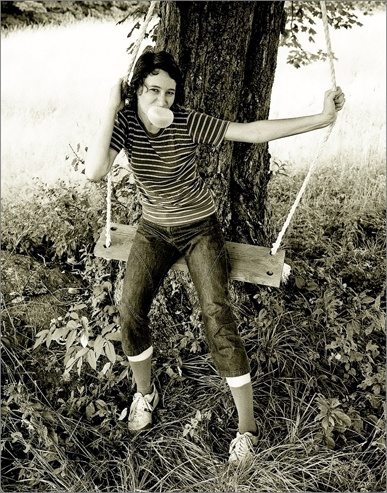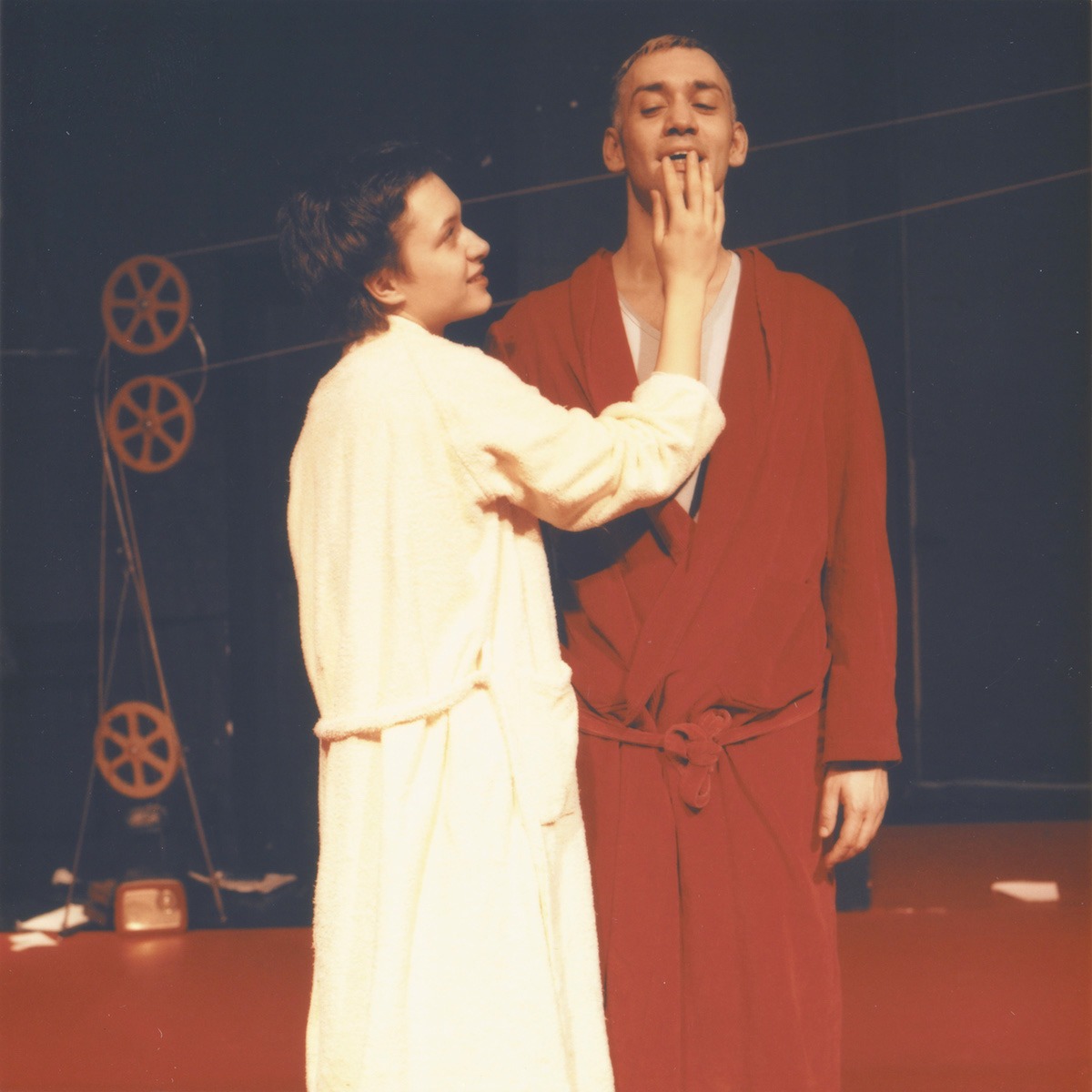Dance and Narrative
Choreographer Irma Omerzo was born in Zagreb, Croatia. At 20, she moved to France to study contemporary dance, performing with Andy Degroat and Philippe Decouflé. After more than a decade, she returned to Zagreb, where she made the duet Mi-Nous (2001). The title of the piece is a bit of wordplay, a multilingual pun. Mi means we in Croatian; nous means we in French; minou (kitten) is, as Omerzo explains, “a tender word exchanged between lovers in Croatia.” A tender word between lovers becomes a duet between a woman and a man—at times tender, at times tough.
In 1966, the U.S. publication Dance News published an article titled “Modern Dance Strives in Yugoslavia” written by Zagreb resident Vera Maletic. In the article, Maletic recounts challenges to the advent of modern dance in Europe, as distinct from the history of modern dance in the United States. Maletic points out choreographers paired what little modern dance was with other art forms. This pairing led to, in particular, a uniquely rich dance theatre tradition. Omerzo talked about her experience as a choreographer in Croatia during a PillowTalk called Dancing Far From Home.
Interview with Omerzo
Omerzo’s understanding of dance theatre leads us to believe the impossible, and makes the improbable seem ordinary. We follow easily as the action shifts from the concrete (she talks on a cell phone; he reads a letter) to the abstract. They appear in each other’s dreams, for example, and we recognize the weightlessness of the floating lover. Mi-Nous adeptly uses theatrical technology to expose tensions. The lighting design enriches the characters by distorting their scale. At times, in shadow, they are gargantuan, enormous and lumbering. Later, the light frames his face, as if a camera zooms in for introspection.
Mi-Nous
The movement is fluid and continuous with rare rough edges. Like the story that starts somewhere in the middle, there are no endings or beginnings to the movement; no large preparations nor closing flourishes. Unison movement highlights their partnership, but individual expression demonstrates their differences. Using movements ranging from abstract actions, social dance conventions, and very human everyday interactions, the partners come together, meet, separate. They yearn for one another, they reject, they compromise, they negotiate. They communicate through actions, letters, words, and glances. Omerzo draws on conventions of love stories and romance familiar to us from theatre, dance, and perhaps most importantly, from life. We see the man and the woman as deeply connected; yet at times, they isolate. Omerzo finds rooms within the stage space to allow the interiority of the individual characters to become external.
As in the best dance theatre, Omerzo uses the choreography and the movement vocabulary to give physical evidence of the story. When this man and this woman take hold of one another’s hand, Omerzo puts us in the midst of their personal and difficult world.
PUBLISHED March 2017

